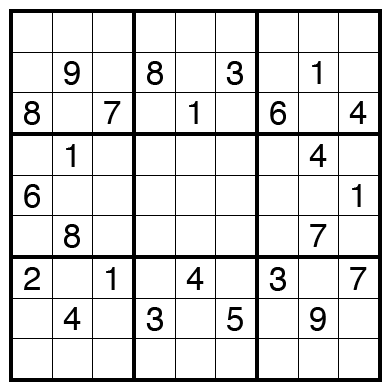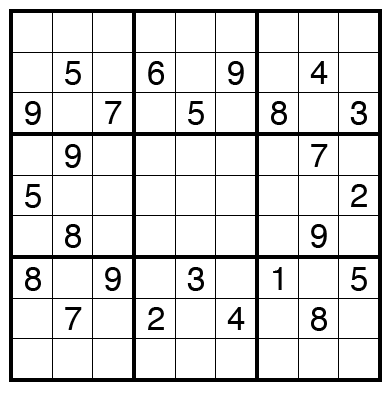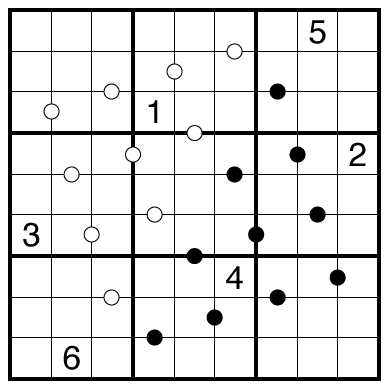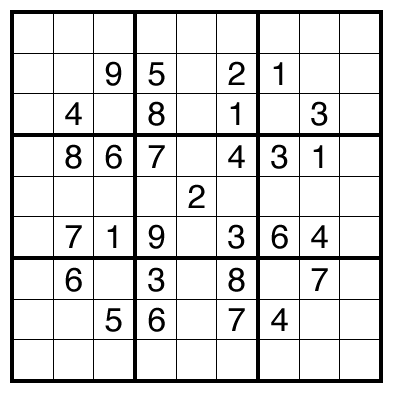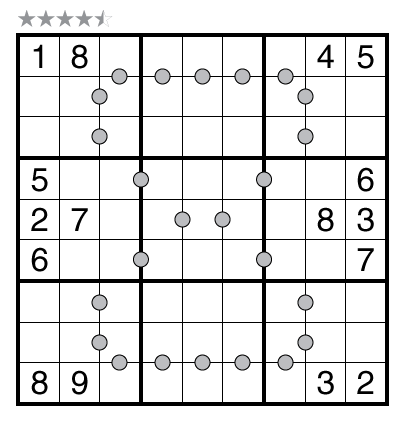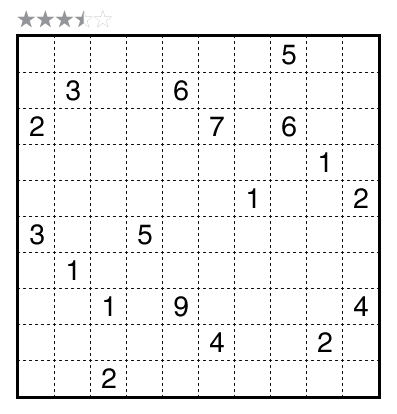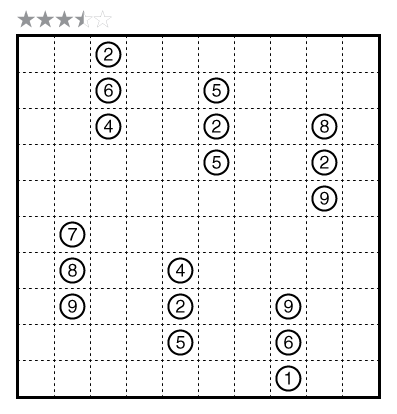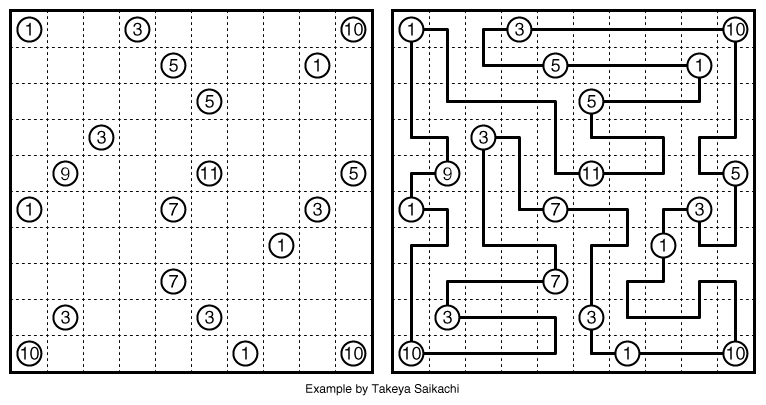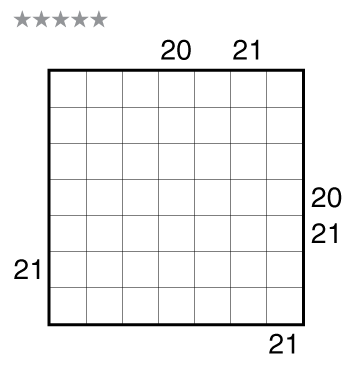A Story of Self-setting Sudoku #4 by Thomas Snyder
The fourth level of self-setting is “High Setting Automation”. The editor relaxes as an automated, intelligent process (AI) generates grids that are then passed to a second AI the editor has set up to reject almost everything that is not an outlier, since corner cases may be the only interesting things left to search for. When needed, the editor still acts to reject unfriendly logic before publishing.
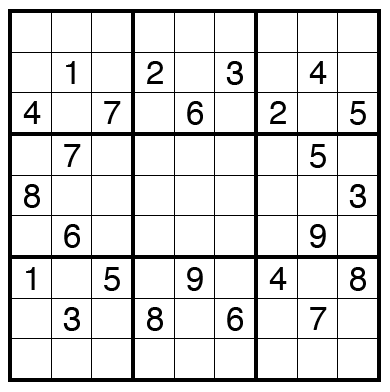
or solve online (using SudokuPad)
Theme: Intelligence is Thinking * The Box (4 of 5)
Author/Opus: This is the 587th puzzle from Thomas Snyder.
Rules: Standard Sudoku rules.
Difficulty (highlight to view): 3.5 stars
Time Standards (highlight to view): Grandmaster = 3:45, Master = 5:45, Expert = 11:30
Solution: PDF
Note: Follow this link for all entries in A Story of Self-setting Sudoku. Follow this link for other classic Sudoku. If you are new to this puzzle type, here are our easiest Sudoku to get started on. More classic Sudoku puzzles can be found in The Art of Sudoku, The Art of Sudoku 2 and in our beginner-friendly collection Intro to GMPuzzles by Serkan Yürekli.
Note 2: Comments on the blog are great! For a more interactive discussion, please also consider using our Twelve Months of Sudoku? post on the GMPuzzles Discord. Not a member of the Discord? Click this link for basic access.

